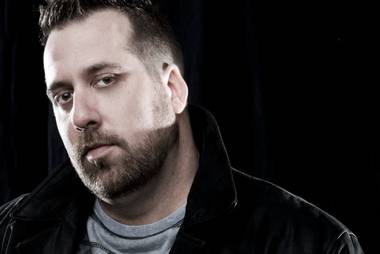"I've dedicated my whole life, my whole career to this, to uplifting the industry."
Steve Olson of AKA Wine Geek is a sort of bionic beverage man, an all-round expert in the realms of beer, wine, spirits and non-alcoholic beverages. Looking out on the roomful of bartenders in the Vail Cascade resort he congratulates us on sharing with him this “sickness,” this intense need to make people happy. “We have here the best the brightest, the new generation if you will."
Over 800 bartenders applied this year for just 100 available seats at the second Grand Marnier & Navan Summit in Vail, Colorado, and these lucky few have made the cut earning themselves a chance to learn from one another and from the likes of Olson and his comrades.
While other companies are canceling their annual meetings and gatherings, especially those in luxurious locations such as resorts and Las Vegas, it particularly impressed me that the Summit survived. "This seems like a really extravagant thing,” says Olson, agreeing. “And it is. The fact that [Grand Marnier has] retained this program ... shows to me a huge commitment to us, to our community."
More
- Related Story
- Tasting notes from the 2009 Grand Marnier & Navan Summit
- Beyond the Weekly
- Grand Marnier
- AKA Wine Geek
- Grand Marnier & Navan Summit
Using the classic Grand Marnier Cordon Rouge, Olson guides us thought a high-level spirits tasting. It was originally called Grand Curacao, this cognac-based luxury orange liqueur, and it has retained that same recipe since its creation in 1880. "That's something I can get behind," Olson declares, at last picking up his glass of rich golden “Grandma,” as they call it. And with that we are instructed to pick up our glasses.
Have your own spirits summit with these tasting steps from Olson.
1. Against a white background such as a white tablecloth or white sheet of paper, regard the color of the liqueur in the glass. It should be a light-medium golden amber.
2. With two fingers on the base of the glass, swirl and look again at viscosity, the so-called legs that form as the liquid descends from the top of the glass to settle back at the bottom.
3. Wave the glass gently in front of your nose and inhale. Place the scents using your memory, your own personal scent filing cabinet. What do you get? Oranges, orange peel, orange blossom and citric acid.
4. "Get into that glass!" Olson urges. Now bring the glass close and dive in deep, nose first, inhaling once more. What else do you smell? Vanilla and caramel from the Limousine oak barrels. Lemon peel, citrus fruits, tropical fruits, floral notes and green apple from the highly acidic grapes. Nutmeg, clove, cinnamon and all-spice, all from the oak. Anything else? Nuts: hazelnuts, almonds, buttery toffee, smoke. "Again, oak". And finally rancio, with the faintest aroma of cheese and dried flowers. "You can't add rancio,” says Olson, nodding knowingly to at least half of the room. “Whiskey drinkers will understand.”
5. Break the spirit down in your mouth. "Part of evaluating spirits is evaluating the
alcohol. If you start with a bad distillate things get muddled … it’s a platform by which all other flavors can be pushed forward." Sip once, putting a little spirit in your mouth but do not swallow. Swish it around and spit. This will prepare you mouth to taste. Sip a second time, this time delivering the spirit to the center of the tongue—skipping over the sweet-seeking tip of your tongue—and let it fall to the sides and reach behind teeth. Hold your lips closed, breath out through nose and then spit again.
6. Purse and part your lips and inhale through your mouth, drawing air over your tongue and breathe out through your nose. You should start salivating from the slight astringency. “That's acid,” says, Olson. "The palate is the only organ in your body connected directly to your brain." Your stomach might even begin to rumble as your brain gets the message from your palate that it’s dinner time. Search again for the flavors in your mind and memory. "Memory is your most important skill," he advised the bartenders, encouraging them to evaluate the quality of the distillate. There is no heat. It is absolutely clean and—to employ just one of the most overused words in the beverage industry—it truly is smooth.
7. Take note of the mouth-feel. Your palate should feel clean, not sticky-sweet like after most liqueurs. Evaluate the balance of sweetness to acid. Now encapsulate the complex finish and "put that up in your memory book so you can pull it out at any time.”
Olson next repeats the process with the Grandma 100 (Cuvee Du Centenaire), and finally with the hush-inspiring Grandma 150 (Cuvée Speciale Cent Cinquantenaire). On the latter, we do not dare spit.
Regarding his own glass of Grandma 150 in the light, Olson sighs a little. "And now we'll just have a moment of silence."









Previous Discussion: